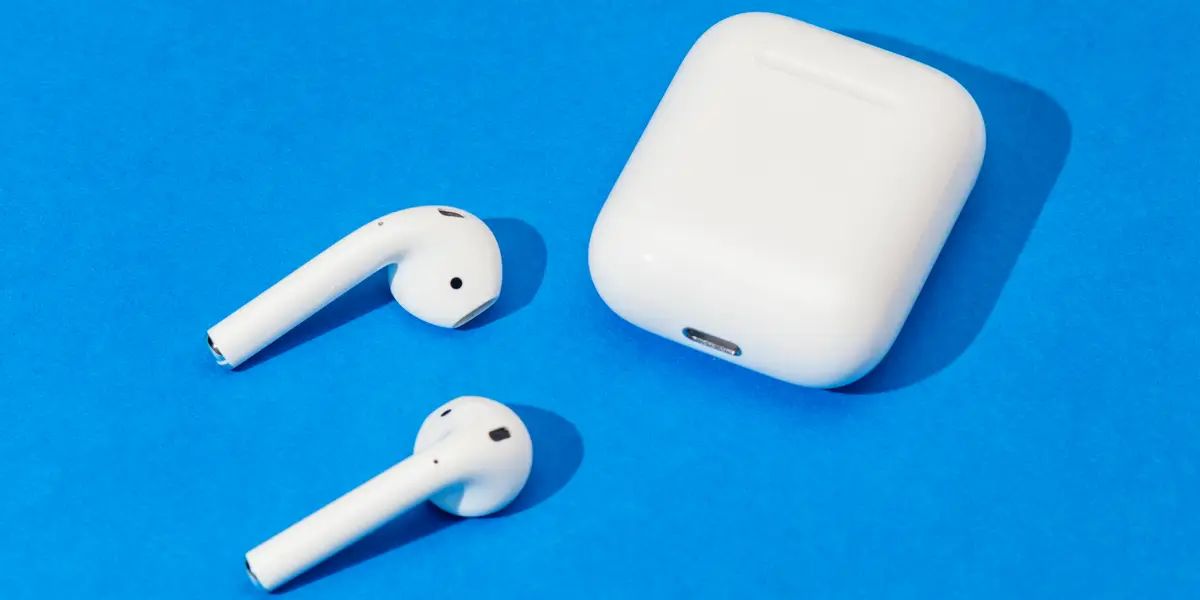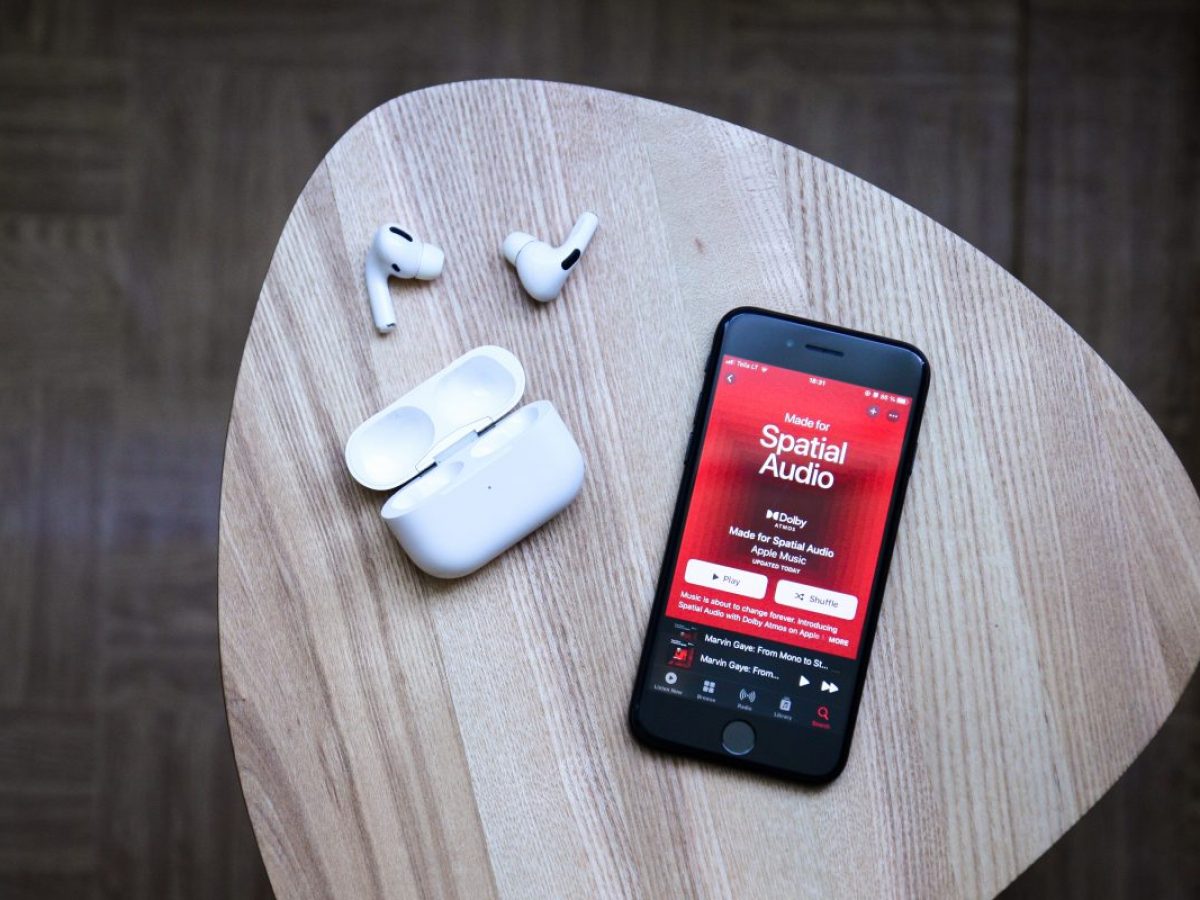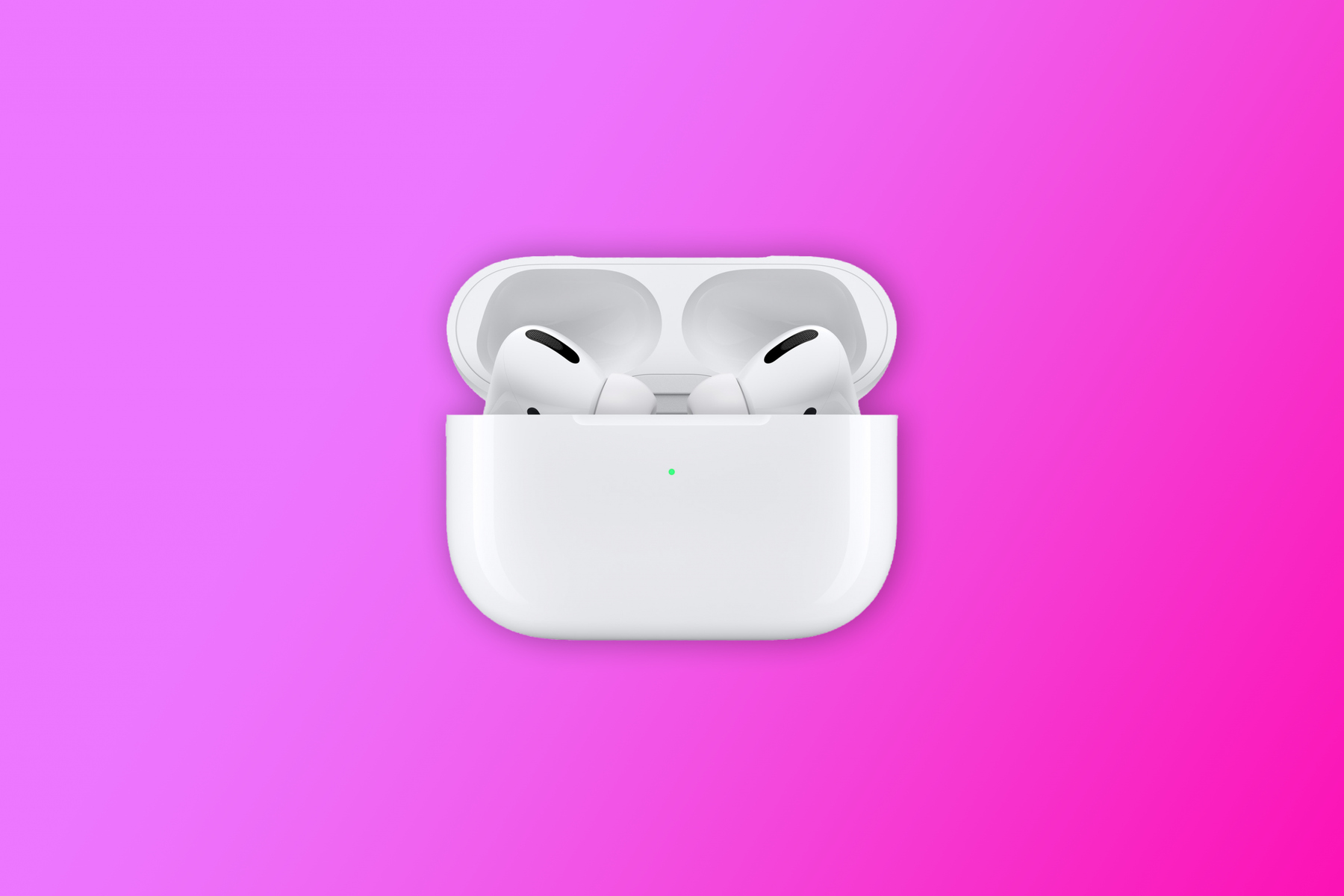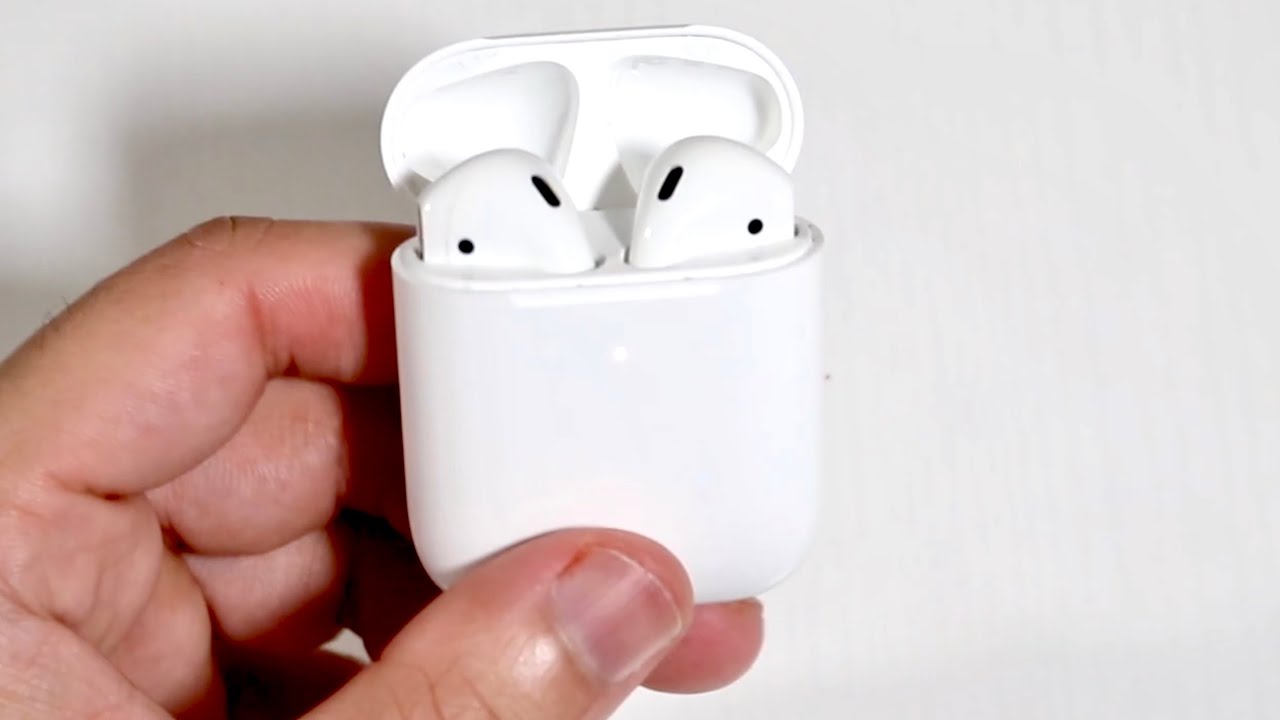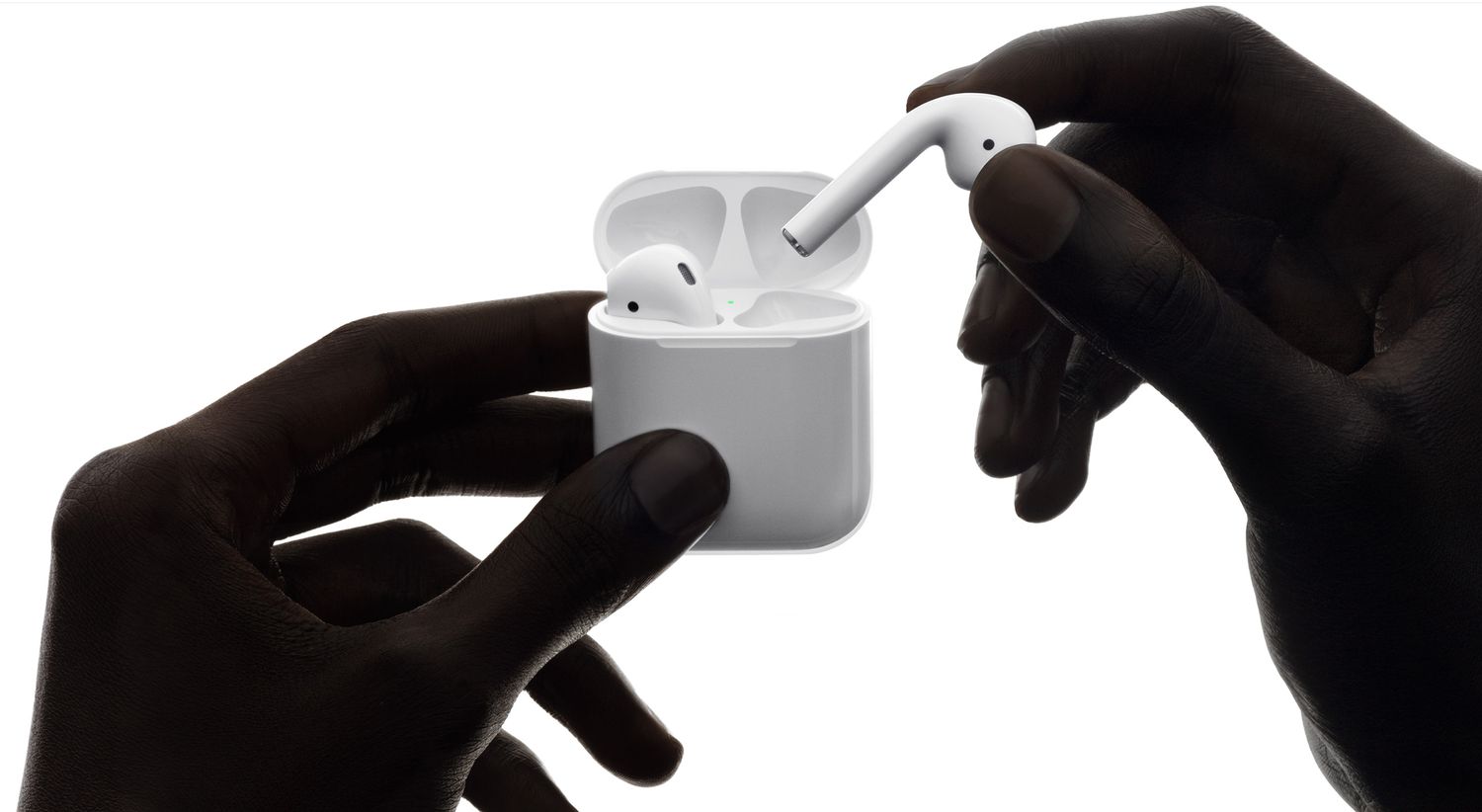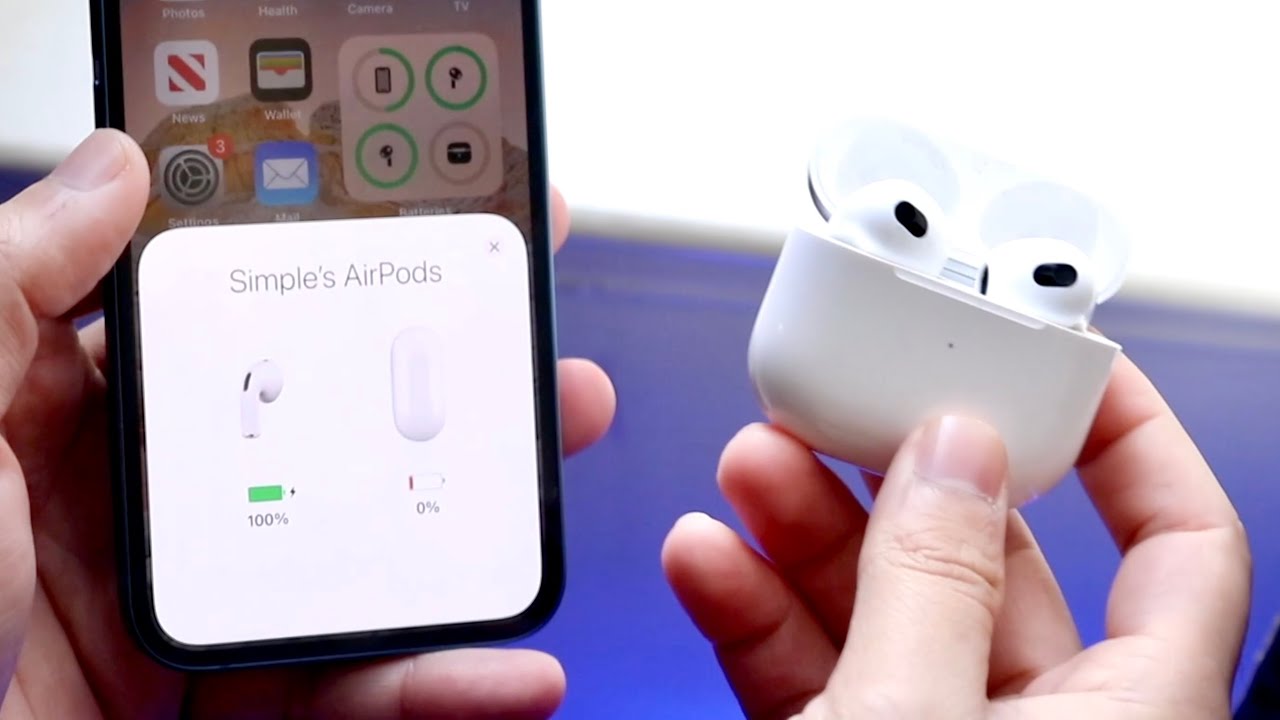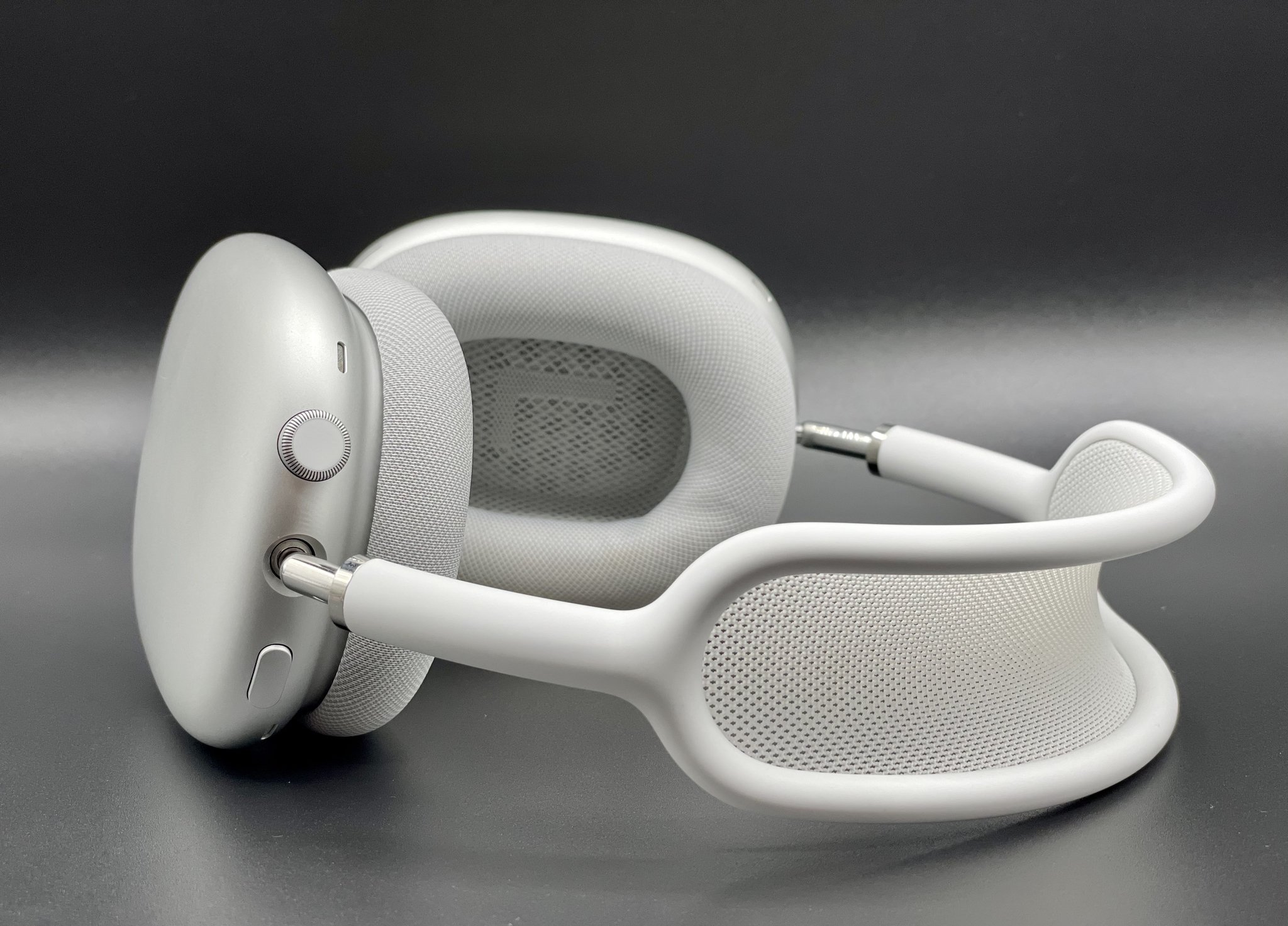Introduction
Apple AirPods have revolutionized the way we listen to music and make phone calls. With their sleek design, seamless connectivity, and impressive sound quality, they have become a must-have accessory for many. However, like any electronic device, AirPods can sometimes encounter connectivity issues that prevent them from connecting to your device.
If you’ve experienced your AirPods not connecting, you’re not alone. This frustrating problem can occur for a variety of reasons, ranging from Bluetooth connectivity problems to low battery issues or even firmware glitches. Fortunately, there are several troubleshooting tips you can try to get your AirPods back up and running.
In this article, we will explore some common issues that could be causing your AirPods to have trouble connecting and provide helpful troubleshooting tips to resolve them. Whether you’re a long-time AirPods user or new to this wireless audio technology, this guide will help you get the most out of your AirPods and ensure a seamless listening experience.
So, let’s dive in and discover the potential culprits behind your AirPods not connecting and learn how to troubleshoot them effectively.
AirPods Not Connecting: Common Issues and Troubleshooting Tips
There are several common issues that can cause your AirPods to have trouble connecting to your device. Understanding these issues and their potential solutions can help you resolve the problem quickly and get back to enjoying your music or taking calls. Let’s explore these issues and the troubleshooting tips you can try:
- Bluetooth Connectivity Problems: One of the most common causes of AirPods not connecting is Bluetooth connectivity issues. Ensure that Bluetooth is enabled on your device and that it is in range of your AirPods. Try turning Bluetooth off and on again or disconnecting and reconnecting your AirPods to see if that resolves the issue.
- Low Battery or Charging Issues: If your AirPods have low battery or are not charged, they may not connect to your device. Check the battery status on your device to see if your AirPods need to be charged. Place your AirPods in their charging case and make sure the case is charged. If necessary, charge the case and then try connecting your AirPods again.
- Interference from Other Devices: Sometimes, interference from other devices can disrupt the Bluetooth connection between your AirPods and your device. Move away from other devices that may be causing interference or turn off their Bluetooth connections. This can include other nearby Bluetooth headphones or speakers, Wi-Fi routers, or even microwaves.
- Firmware Updates: Apple periodically releases firmware updates for AirPods to improve performance and compatibility. Ensure that your AirPods are running the latest firmware by checking for updates through the Settings app on your device. If an update is available, install it and then try connecting your AirPods again.
- Resetting AirPods: If all else fails, resetting your AirPods can often resolve connectivity issues. To reset your AirPods, open the lid of the charging case and press and hold the setup button on the back of the case until the LED light on the front starts flashing white. Then, reconnect your AirPods to your device and see if they connect successfully.
- AirPods Compatibility: Ensure that your AirPods are compatible with your device. AirPods generally work best with Apple devices running the latest version of iOS or macOS. If you’re using an Android or other non-Apple device, check for compatibility requirements and ensure that your device meets them.
- Software Updates: In addition to firmware updates for the AirPods, it’s important to keep your device’s software up to date. Check for any available software updates for your device and install them. Sometimes, compatibility issues between older software versions and the AirPods can cause connection problems.
- Hardware Issues: If none of the troubleshooting tips mentioned above solve the connectivity problem, there may be a hardware issue with your AirPods or your device. Contact Apple support or visit an authorized service center for further assistance and guidance.
By following these troubleshooting tips, you can increase the chances of resolving the issue of AirPods not connecting to your device. Remember to be patient and try each step thoroughly before moving on to the next. Hopefully, you’ll be back to enjoying your wireless audio experience in no time!
Bluetooth Connectivity Problems
One of the most common reasons why your AirPods may not connect to your device is Bluetooth connectivity issues. Bluetooth technology allows your AirPods and device to communicate wirelessly, but sometimes there can be disruptions in the connection. Here are some troubleshooting tips to resolve Bluetooth connectivity problems:
- Ensure Bluetooth is Enabled: First, make sure that Bluetooth is enabled on your device. Check the settings menu on your device and ensure that the Bluetooth toggle is turned on. If it’s already on, try toggling it off and on again to refresh the Bluetooth connection.
- Check Device Compatibility: Verify that your device is compatible with AirPods. While AirPods are primarily designed for Apple devices, they can also connect to other Bluetooth-enabled devices, including Android phones and tablets. However, some features may be limited on non-Apple devices.
- Reset Bluetooth Settings: If you’re experiencing persistent Bluetooth connectivity issues, resetting your device’s Bluetooth settings may help. Go to the Bluetooth settings on your device and look for an option to “Forget” or “Unpair” your AirPods. Afterward, re-pair your AirPods with your device as if you were setting them up for the first time.
- Move Closer to Your Device: Ensure that you are within the Bluetooth range of your device. Bluetooth signals have a limited range, usually around 30 feet or 10 meters. If you are too far away, the connection may be weak or unstable. Try moving closer to your device and see if that improves the Bluetooth connectivity.
- Remove Interference: Bluetooth signals can be affected by interference from other devices or objects. Keep your AirPods away from items like Wi-Fi routers, other Bluetooth devices, microwaves, and even some household appliances. Additionally, walls and barriers can weaken the Bluetooth signal. Try moving to a different location to see if that resolves the connectivity problems.
By following these troubleshooting tips, you can address common Bluetooth connectivity problems that may be preventing your AirPods from connecting to your device. Remember to check both your AirPods and your device’s Bluetooth settings, ensure compatibility, and take steps to minimize interference. With a little patience and troubleshooting, you can enjoy a seamless wireless audio experience with your AirPods.
Low Battery or Charging Issues
If your AirPods are not connecting to your device, one of the possible causes could be low battery or charging issues. Both the AirPods themselves and the charging case require sufficient power to establish a connection. Here are some troubleshooting tips to address low battery or charging issues:
- Check AirPods Battery: Ensure that your AirPods have enough battery power. Open the lid of the charging case while your AirPods are inside, and check the LED indicator on the front of the case. If it shows a green light, your AirPods have sufficient battery power. If it’s amber or red, it indicates that the battery is low or almost depleted.
- Charge Your AirPods: If your AirPods have low battery or are completely drained, place them inside the charging case and connect the case to a power source using the charging cable. Make sure the charging cable is securely plugged in at both ends. Allow your AirPods to charge for at least 15-20 minutes before attempting to connect them to your device.
- Check Charging Case Battery: Ensure that the charging case itself has enough battery power. If the LED indicator on the front of the charging case does not light up when you open the lid or it shows a flashing amber light, it indicates that the charging case battery is low. In this case, connect the charging case to a power source to recharge it.
- Verify Charging Cable Connectivity: Check the charging cable for any signs of damage or wear. Make sure it is not bent or frayed, as a faulty cable can prevent proper charging. Try using a different charging cable or USB port to verify if the issue lies with the cable or port.
- Restart Your Device: Sometimes, restarting your device can help resolve charging issues. Disconnect your AirPods from your device and power it off completely. Wait for a few seconds, then power it back on and attempt to reconnect your AirPods after charging them for a while.
By following these troubleshooting tips, you can address low battery or charging issues that may be causing your AirPods not to connect. Ensure that both your AirPods and the charging case have sufficient power, check the charging cable for any issues, and restart your device if necessary. With proper charging, your AirPods will be ready to connect to your device and provide you with a seamless audio experience.
Interference from other Devices
Interference from other devices can often disrupt the Bluetooth connection between your AirPods and your device, resulting in connectivity issues. Wireless signals from nearby devices can interfere with the Bluetooth signal, causing it to weaken or become unstable. Here are some troubleshooting tips to address interference problems:
- Move Away from Other Devices: If you’re experiencing connectivity issues, try moving away from other devices that may be causing interference. These can include other Bluetooth headphones or speakers, Wi-Fi routers, cordless phones, or even microwave ovens. Increasing the physical distance between your AirPods and these devices can help reduce interference.
- Turn Off Other Bluetooth Devices: If moving away from other devices is not possible, try turning off the Bluetooth connections on those devices. This can help reduce interference and improve the Bluetooth connection between your AirPods and your device. Remember to disconnect or unpair the devices from your device’s Bluetooth settings.
- Change Wi-Fi Channels: Wi-Fi signals can also interfere with Bluetooth signals. If you’re experiencing connectivity issues, try changing the Wi-Fi channel on your router. Refer to your router’s user manual or the manufacturer’s website for instructions on how to change the Wi-Fi channel. This can help minimize interference and improve the performance of your AirPods.
- Avoid Obstructions: Walls, furniture, and other physical obstructions can weaken the Bluetooth signal. Try positioning yourself in a clear line of sight between your AirPods and your device. Minimize obstacles between them to ensure a stronger and more stable Bluetooth connection.
- Use 5GHz Wi-Fi: If your router supports both 2.4GHz and 5GHz Wi-Fi bands, consider connecting your device to the 5GHz band. Bluetooth operates on the 2.4GHz band, which is shared with various other devices. Switching to the 5GHz band can help reduce interference and improve the performance of Bluetooth devices, including your AirPods.
By following these troubleshooting tips, you can minimize interference from other devices and improve the Bluetooth connectivity between your AirPods and your device. Whether it’s moving away from devices causing interference, turning off Bluetooth on those devices, changing Wi-Fi channels, avoiding obstructions, or using the 5GHz Wi-Fi band, these steps can help enhance the overall performance of your AirPods.
Firmware Updates
Apple periodically releases firmware updates for AirPods to improve their performance and address any known bugs or issues. These updates can also enhance compatibility with your device, ensuring a seamless connection. If your AirPods are not connecting, it’s worth checking if there’s a firmware update available. Here’s how you can do it:
- Ensure Internet Connectivity: Make sure your device is connected to the internet either through Wi-Fi or mobile data. This is essential to download the firmware update for your AirPods.
- Check for Updates on iOS: If you’re using an iPhone or iPad, go to the Settings app and navigate to General > About. Look for the “AirPods” option and tap on it. If a firmware update is available, you will see a prompt to download and install it. Follow the on-screen instructions to complete the update process.
- Check for Updates on macOS: If you’re using a Mac, open the System Preferences app and click on “Bluetooth.” From the Bluetooth settings window, select your AirPods from the list of devices. If a firmware update is available, you will see a button or a prompt to download and install it. Proceed with the update process as prompted.
- Keep AirPods Connected: During the firmware update process, ensure that your AirPods remain connected to your device and are placed inside the charging case. It’s important not to disconnect or move too far away from your device until the update is complete.
- Wait Patiently: Firmware updates may take some time to download and install, depending on your internet connection and the size of the update. Be patient and allow the update process to complete uninterrupted. Avoid turning off your device or closing the settings app during the update.
By regularly checking for firmware updates and keeping your AirPods up to date, you can ensure optimal performance and compatibility with your device. These updates can address known issues and provide important improvements to enhance your overall AirPods experience. So, if your AirPods are not connecting, it’s worth checking for firmware updates as they may contain the solution to your connectivity problem.
Resetting AirPods
If you’ve tried all the troubleshooting steps mentioned above and your AirPods are still not connecting, resetting them can often resolve the issue. Resetting AirPods will restore them to their default settings and clear any erratic configurations. However, please note that this process will also remove any customizations or personalized settings you’ve made. Here’s how you can reset your AirPods:
- Place AirPods in the Charging Case: Open the lid of the AirPods charging case and ensure that both AirPods are inside the case. Keeping them in the case is necessary for the reset process.
- Press and Hold the Setup Button: On the back of the charging case, there is a small button called the “Setup button.” Press and hold this button until you see the LED light on the front of the case start flashing white. This process might take a few seconds, so keep pressing the button until the flashing white light appears.
- Reconnect to Your Device: Once the LED light starts flashing, put the AirPods charging case near your device and follow the usual pairing process as if you were connecting them for the first time. Open the Bluetooth settings on your device, locate your AirPods, and proceed with the connection.
- Check Connectivity: After reconnecting your AirPods, check if they now connect successfully to your device. Test the audio playback or make a test call to ensure proper functionality.
By resetting your AirPods, you can eliminate any software-related issues that may be preventing them from connecting. This process effectively restores the default settings, allowing you to start fresh with a clean connection. Remember to reconnect your AirPods to your device after the reset to ensure proper communication.
However, please note that if your AirPods are still not connecting after resetting them, further troubleshooting or contacting Apple Support may be necessary. Resetting is often an effective solution, but it may not address every potential problem that could occur with your AirPods.
AirPods Compatibility
When experiencing connectivity issues with your AirPods, it’s essential to ensure that they are compatible with your device. While AirPods are primarily designed for Apple devices, they can also work with other Bluetooth-enabled devices, including Android smartphones and tablets. However, compatibility and feature availability may vary depending on the device and operating system. Here are some key points to consider regarding AirPods compatibility:
- Apple Device Compatibility: AirPods work seamlessly with Apple devices running the latest version of iOS, iPadOS, or macOS. This includes iPhone, iPad, iPod Touch, and Mac models. They are designed to take advantage of the integrated Apple ecosystem and offer features such as automatic device pairing and quick switching between devices signed in to the same Apple ID.
- Android and Other Device Compatibility: AirPods can also be used with Android smartphones, tablets, and other Bluetooth-enabled devices. However, some features, such as seamless device switching or Siri integration, may be limited or unavailable on non-Apple devices. It’s important to refer to the AirPods’ compatibility information specified by Apple for a complete list of compatible devices and their supported features.
- Software Requirements: Ensure that your device is running the latest software version available. Updates to the operating system can sometimes bring improved compatibility and address connectivity issues. Check your device’s settings or the manufacturer’s website for information on how to update the software.
- Bluetooth Version: AirPods support Bluetooth connectivity, so it is crucial to ensure that your device supports Bluetooth technology and is running a compatible version. Most modern smartphones, tablets, and computers should have Bluetooth capabilities, but older devices or certain low-end models may have limitations.
- Check Specific Device Requirements: Each device may have specific requirements for connecting and using AirPods. If you’re encountering issues, check the device’s user manual or manufacturer’s website for any specific instructions or compatibility considerations associated with AirPods or other Bluetooth devices.
By ensuring compatibility between your AirPods and your device, you can eliminate potential problems related to incompatibility and maximize the functionality of your AirPods. While AirPods are designed with Apple devices in mind, they can still be used with other Bluetooth devices, but you may experience some limitations in terms of features and ease of use.
Remember to refer to the official Apple documentation and guidelines regarding AirPods compatibility for the most up-to-date and accurate information.
Software Updates
Ensuring that both your device and your AirPods are running the latest software versions is crucial for optimal performance and compatibility. Software updates, whether for your device or your AirPods, often include bug fixes, feature enhancements, and improvements in connectivity. If you’re experiencing connectivity issues with your AirPods, here’s what you can do:
- Device Software Updates: Check for any available software updates for your device. Manufacturers often release updates that address known issues and improve the overall functionality of the device. Keep your device’s software up to date by going to the settings menu and looking for the “Software Update” or similar option. Install any available updates and restart your device if prompted.
- AirPods Firmware Updates: Apple periodically releases firmware updates specifically for AirPods. These updates can improve connectivity, audio performance, and overall stability. To check for firmware updates, make sure your AirPods are connected to your device and open the Settings app. Navigate to the section that displays your AirPods information, and if an update is available, follow the instructions to download and install it.
- Installation Process: Software updates for your device and AirPods may require a stable internet connection and sufficient battery power. Connect your device to Wi-Fi or a reliable data network before initiating the update process. Additionally, make sure your AirPods and their charging case have enough battery level to complete the update without interruptions.
- Restart Your Device: After installing software updates, it’s a good practice to restart your device. This helps ensure that any changes made during the update process are fully implemented and can resolve any lingering connectivity issues that may persist.
By keeping your device and AirPods up to date with the latest software versions, you can improve the overall performance and compatibility of your AirPods. Software updates often address known issues and provide enhancements that can positively impact connectivity. Remember to regularly check for updates for both your device and your AirPods to ensure a smooth and seamless audio experience.
Hardware Issues
If you have tried all the troubleshooting steps mentioned above and your AirPods are still not connecting, there may be a possibility of hardware issues impacting their functionality. Hardware issues can range from physical damage to internal component failure. Here are some considerations and steps you can take to address potential hardware problems:
- Physical Inspection: Carefully examine your AirPods and the charging case for any visible signs of damage, such as cracks, dents, or water damage. If you notice any damage, it may indicate a hardware issue that requires repair or replacement.
- Try on Another Device: To determine if the issue is specific to your device or the AirPods themselves, try connecting your AirPods to a different compatible device. If they still do not connect, it suggests a hardware issue with the AirPods. However, if they connect successfully to another device, it could indicate an issue with your original device.
- Apple Support or Authorized Service Center: If you suspect a hardware problem, it is advisable to reach out to Apple Support or visit an authorized service center. They have the expertise and resources to diagnose and address hardware issues effectively. Provide them with detailed information about the problem and any relevant observations during your troubleshooting attempts.
- Warranty or Repair Coverage: If your AirPods are still under warranty or if you have AppleCare or other extended protection plans, contact Apple Support to explore repair or replacement options. Depending on the nature of the hardware issue and the coverage you have, they may be able to provide a solution at no additional cost.
- Consider Replacement: If your AirPods are no longer under warranty or repair coverage, and the hardware issue is significant or irreparable, you may need to consider purchasing a new pair. Apple or authorized retailers can provide assistance in finding the right replacement option for you.
Hardware issues with AirPods are relatively uncommon, but they can occur over time or due to accidental damage. If you suspect a hardware issue is causing the connection problem, seeking professional assistance is the best course of action. They can assess and provide appropriate solutions to resolve the hardware-related challenges you face.
Conclusion
Experiencing connectivity issues with your AirPods can be frustrating, but fortunately, there are several troubleshooting steps you can take to resolve the problem. In this guide, we have explored common issues that can cause AirPods not to connect and provided helpful troubleshooting tips to address them.
First, we discussed Bluetooth connectivity problems and provided tips on ensuring Bluetooth is enabled, checking device compatibility, resetting Bluetooth settings, and minimizing interference from other devices. We then explored low battery or charging issues and provided guidance on checking battery levels, charging the AirPods and the case, and ensuring the charging cable and connections are working properly.
Next, we discussed the potential interference that can arise from other devices and provided solutions such as moving away from devices causing interference, turning off Bluetooth on other devices, changing Wi-Fi channels, and avoiding physical obstructions. We then highlighted the importance of firmware updates and explained how to check for and install updates for both your device and your AirPods.
We also discussed the option of resetting the AirPods to their default settings to resolve persistent connectivity issues. Additionally, we stressed the significance of checking compatibility between your AirPods and your device, as well as ensuring that both are running the latest software versions.
Finally, we addressed the potential of hardware issues causing connectivity problems and provided guidance on inspecting physical damage, trying the AirPods on another device, contacting Apple Support or authorized service centers, considering warranty or repair coverage, and exploring replacement options.
By following these troubleshooting tips and exploring the appropriate solutions for your specific issue, you can increase your chances of resolving connectivity problems and enjoying a seamless experience with your AirPods. Remember to be patient and thorough in your troubleshooting efforts, and don’t hesitate to seek professional assistance if necessary.







